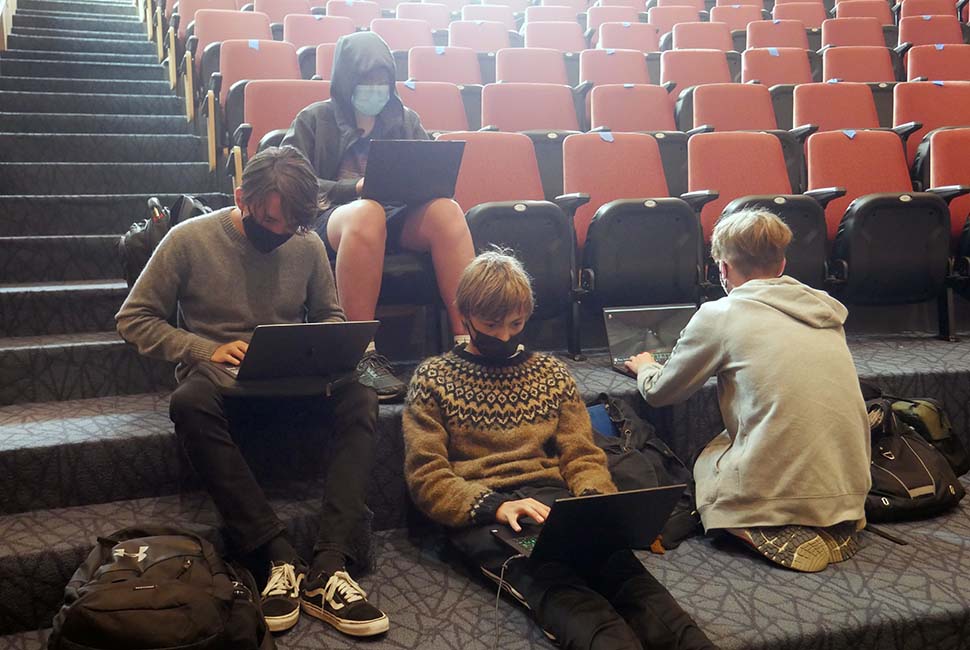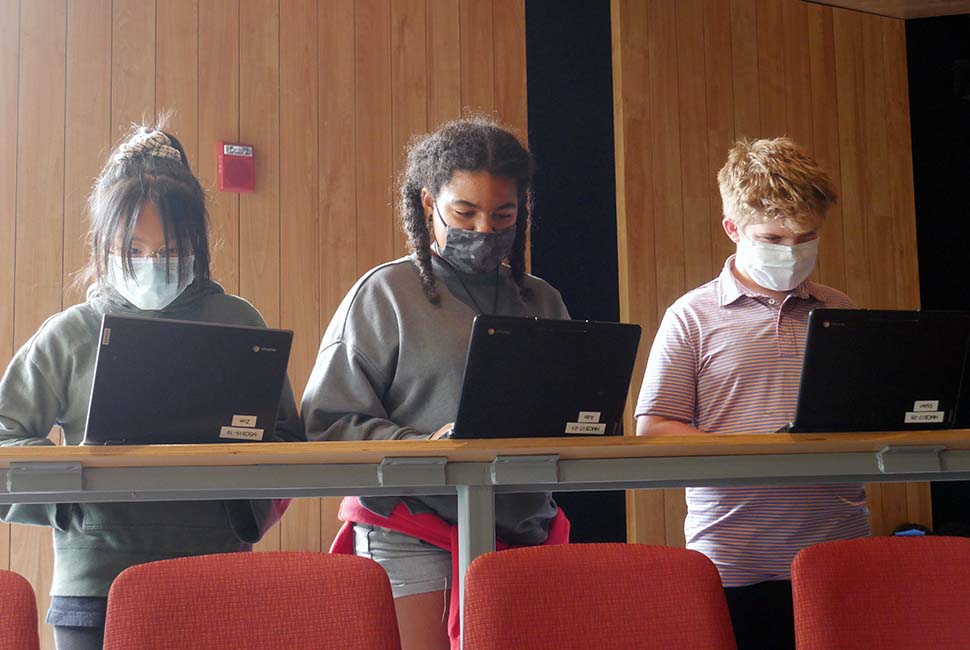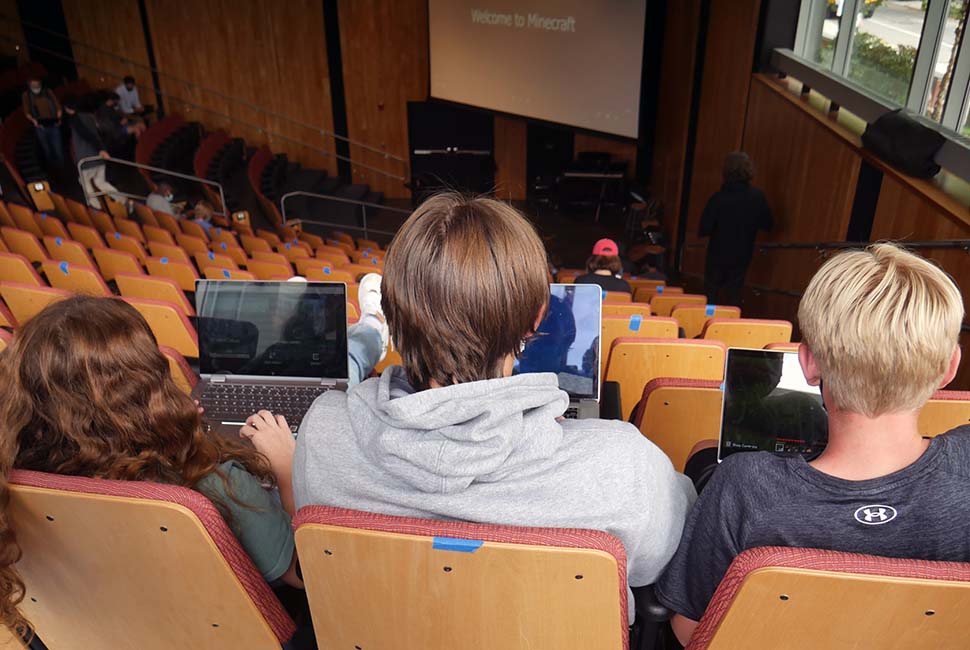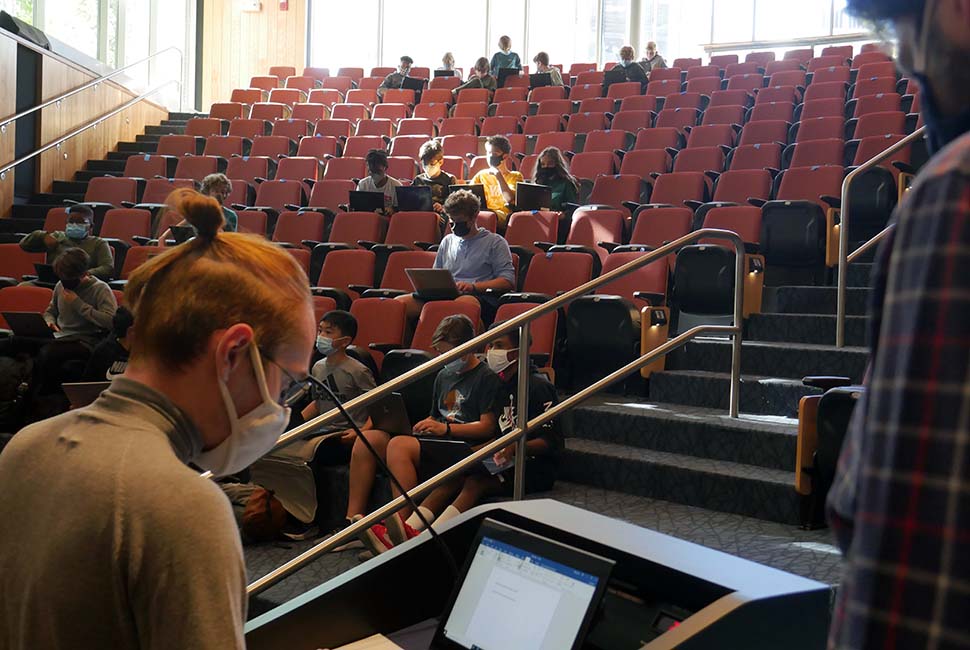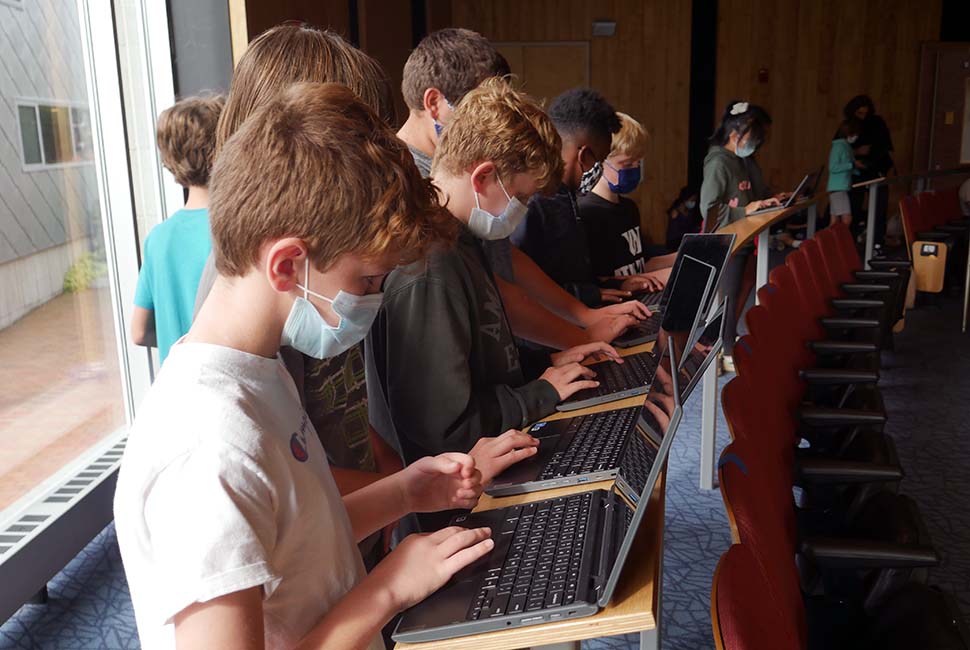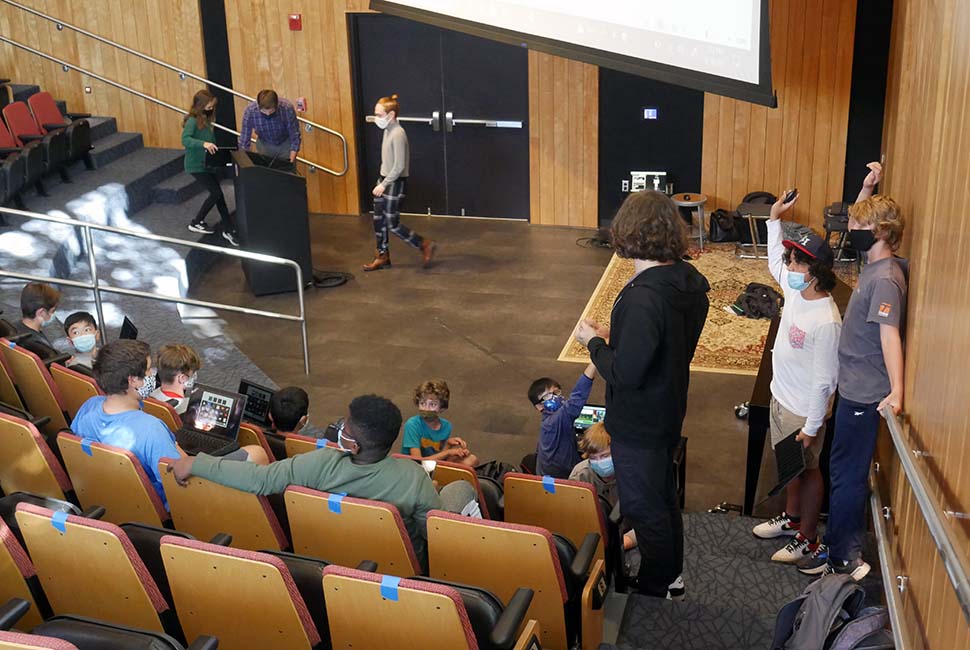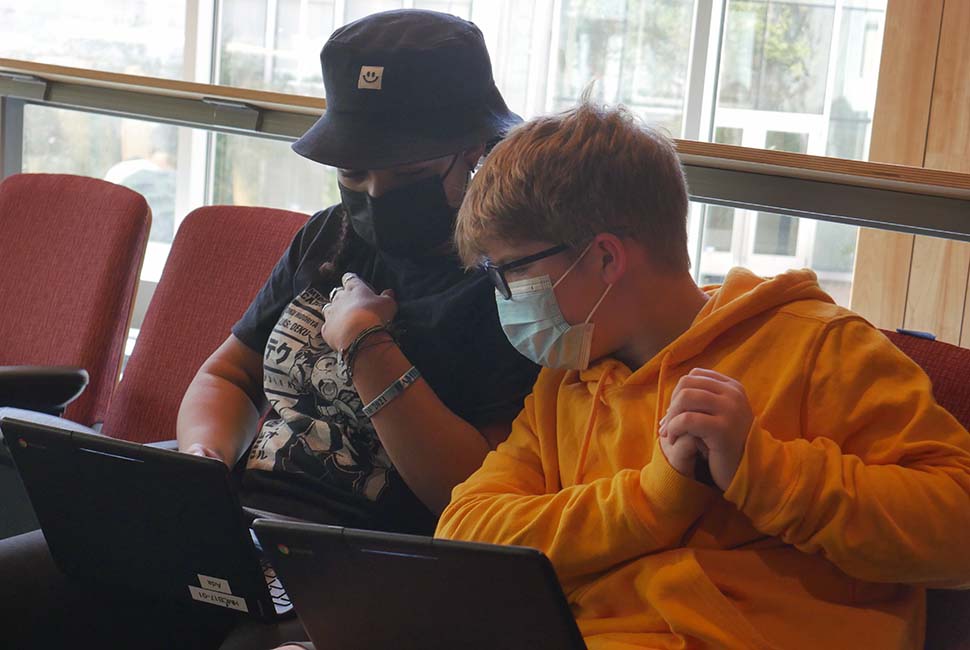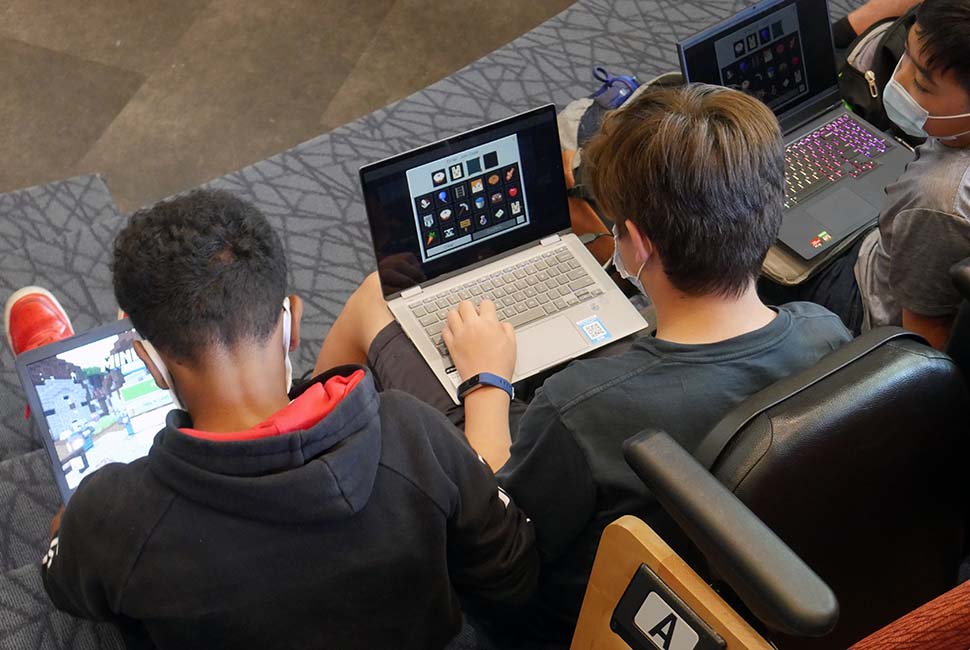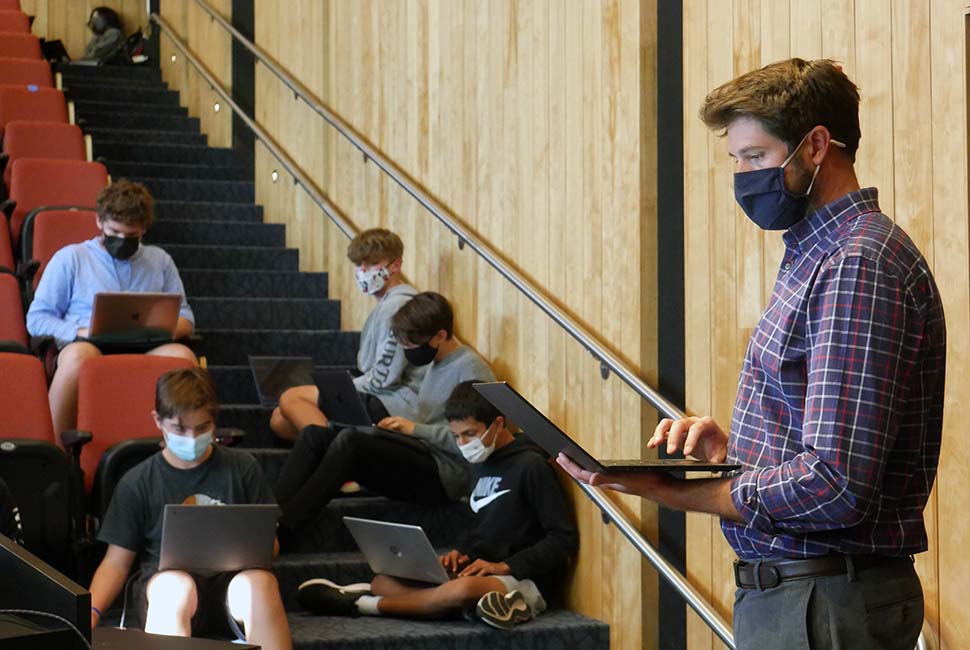Middle School Minecraft
October 28, 2021
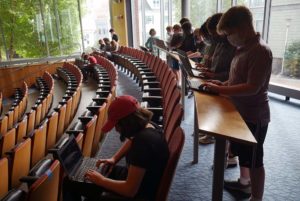
When you enter Isenberg Auditorium during the Middle School’s Minecraft Aerie Enrichment class, you’re greeted by a sea of screens. More than 50 students are gathered around their laptops playing the massively popular “sandbox” video game, while a much larger screen at the front of the room projects important game-related information. It’s fascinating to see how the group connects in two spaces simultaneously: they’re talking to one another in the auditorium while building and engaging in a shared virtual world.
“I like to think of Minecraft as a digital canvas,” says Travis Dumais, who conceived the class. “If you want to make a sculpture, you can. If you want to farm and harvest crops, you can. If you want to explore, you can. It’s a lot less mindless than many video games. Our goal as instructors is to challenge the students to see the possibilities within this space and provide them with opportunities to share their unique ideas with the community.”
Dumais’ fellow teachers are Alex Weeks and Joe Centofanti. They partnered previously to develop the curriculum for a Game Design class that was offered last year. “The experience has been a fantastic one; we found that we share very similar visions and working together has come rather naturally,” Weeks says. “Travis and I both have experience as educators and are subject matter experts, and Joe is fantastic at managing, organizing, and helping with everything else from research to writing. We all understand what we bring to the table and what the others bring, and we’re honest and open about our own strengths and weaknesses.”
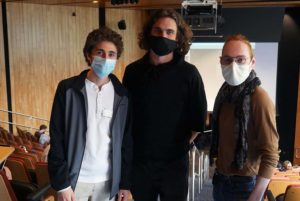
A similar sense of openness, Centofanti says, is key to realizing what makes Minecraft such a beneficial learning platform. “Initially, when I was asked to play a supporting role for the class, I was unclear about the value proposition. I think other people have the same gut reaction: ‘Why are we spending the school day playing games, again?’ My reluctance dissolved the second I started exploring Minecraft Education Edition. There were classes that would teach kids coding and software development. And there were classes for right-brained thinkers, too. Here I was, touring a sustainable city, walking the path between a hydroponic farm and a massive water filtration plant. This was something.
“People think games are a waste of time because they judge them by the utilitarian value of their material result: time wasted and nothing to show for it,” he continues. “But this is a crucial mistake. In games, we adopt the agency of another—in this case a Minecraft avatar—so that we can learn something new and develop empathy. We become the farmer that stocks the fish for his hydroponic lettuce and we become a plant manager, learning about interlocking systems. Each time we play, we step into the virtual shoes of another, and we come back to reality with new lessons and new understandings. Minecraft especially shines with its Creative Mode. There, play is about more than just survival. It’s about exploration, empathy, and fellowship. What happens when resource scarcity and the concept of ‘enemy’ are abolished from the world? Don’t ask me! See what our students make!”
Before the students could start creating, however, Centofanti, Weeks, and Dumais had to get creative with physical space. “The first challenge was the sheer number of students who signed up,” Weeks explains. “The initial idea was to have two classrooms, one with Travis and one with myself, with a wait list for the remaining students. When the opportunity to use the Isenberg Auditorium came around, we were able to offer the class to all 53 students at once.”

The next challenge was a technical one. “Imagine getting 53 logins and passwords all to work within the first 30 minutes of class,” Dumais describes. “Needless to say, it was loud and wild. But we got it to work. From then on, it’s been smooth sailing. Special shoutout to Joe Scanlon, the tech master who modified the network and got accounts for the entire middle school!”
Now that they’re operational, where does the class go from here? According to the teachers, it’s wherever the students can imagine. “We’re aiming to foster the students’ creativity and teamwork skills in a fun environment,” Week says. “All three of us believe highly in the importance of developing these skills, as there is a growing demand for them in both academic and work settings.”
And given the demand from students, Dumais believes the Minecraft enrichment class can be a small part of a larger vision for Wheeler’s growing Game Design Program. “This is only the beginning,” he says.

